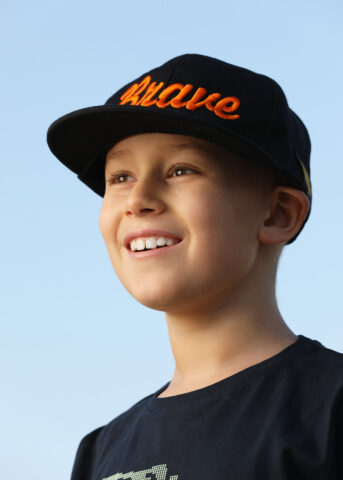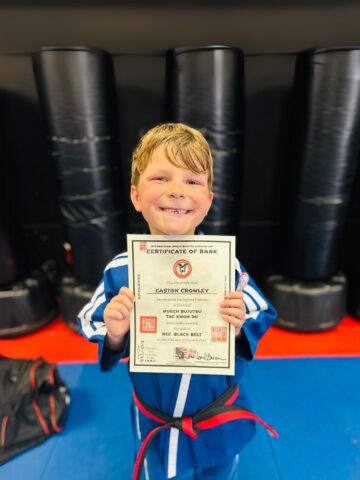Heidi Sexton knew her young epileptic daughter, Kara, needed more help. Anti-seizure medications didn’t help, hospital visits were frequent, and seizures and tantrums continued.
“It was time,” Heidi recalled. “I went in to the next doctor’s appointment with my questions: What else can we try? This isn’t working.”
Dr. Mary Zupanc, director of CHOC’s comprehensive epilepsy program, offered her recommendation: Kara needs brain surgery.
A little girl’s long road
Though no doubt a staggering consideration, brain surgery would be the next landmark on a long medical history that belied Kara’s short three years of life.
At just 13 months old, she underwent emergency brain surgery after her frontal lobe hemorrhaged, caused by a previously undiscovered vascular malformation. The hemorrhage in Kara’s brain led to right-side hemiplegia, leaving her no use of her right hand and limited the use her right leg.
Kara underwent physical therapy and began walking at age 2. Life was relatively normal for the Sexton family until just after Kara’s third birthday, when she began acting strangely.
Kara’s body would stiffen, she’d fall down and stare off into space, Heidi recalled. It wasn’t until a visit to the Julia and George Argyros Emergency Department at CHOC Hospital that the Sextons would learn Kara was having seizures.
At the CHOC Neuroscience Institute, Kara underwent an electroencephalogram, or EEG, a test that monitors for electrical activity in the brain. Next, she spent six days undergoing long-term video EEG monitoring. From there, Dr. Zupanc, also CHOC’s neurology division chair, made an official diagnosis of epilepsy and prescribed an anti-epileptic medication.
Exploring other options
Nonetheless, Kara’s seizures continued. Kara’s three older siblings were acutely aware of their sister’s disorder, daily counting Kara’s seizures and agonizing over each hospital visit. The family began to placate Kara in hopes of staving off outbursts and tantrums, Heidi said.
“Kara had between two and four seizures a day,” she said. “It really messed with her behaviorally. She’s a lovely kid, but she suffered serious temper tantrums. It was physically and emotionally exhausting.”
A second six-day monitoring session led Dr. Zupanc to change Kara’s medication and, as a precaution, begin evaluating her as a candidate for epilepsy brain surgery.
Further tests and scans revealed that the left hemisphere of Kara’s brain was significantly injured and atrophied – likely related to her earlier hemorrhage. In addition, Kara’s new anti-epileptic medication wasn’t working.
Dr. Zupanc concluded that the next step was a hemispherectomy, a surgical procedure in which one side of the brain is removed or disconnected.

“On scans, Kara’s hemisphere was completely white,” Heidi said. “The only thing her left hemisphere was doing was causing seizures. There was no question.”
A change of course
Nearly 11 months after the seizures first surfaced, Kara underwent surgery at CHOC to remove a portion of her brain’s left side, and disconnect the remaining portion from the right hemisphere. Performed by neurosurgeon Dr. Joffre Olaya, the procedure lasted six hours.
After 16 days recovering in the hospital’s pediatric intensive care unit, Kara went home just after her fourth birthday.
Much to her parents’ and siblings’ relief, Kara hasn’t had a seizure since her surgery eight months ago. Kara still relies on an anti-epileptic medication, but she may be able to stop taking it completely or use a lower dose of medication soon if her progress continues.
Though considering a second brain surgery was daunting for the Sextons, Heidi and her husband knew the procedure was the right choice to help their daughter.
“I looked at it in a sense of quality of life for Kara,” Heidi said. “Hopefully now she’ll be able to drive one day. Continued seizures would have impaired her cognitively forever, and I didn’t want that.”
Though she still requires extensive care, Kara is doing well physically and emotionally and is looking forward to preschool.
Kara isn’t fully aware of her journey in the last year, but she understands the meaning of the scar on her head just above her ear.
“She knows now that she doesn’t have seizures and Dr. Olaya and Dr. Zupanc fixed her,” Heidi said.





